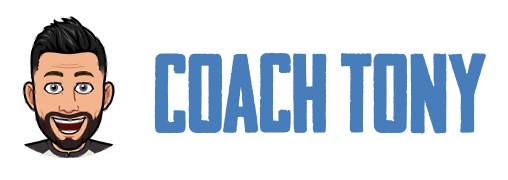
4 Rules for Defining Your Brand When the Personal Is Professional
In 2018, I’ve had the privilege to work very closely with a number of company founders and product creators thanks to Ingram Micro Commerce & Lifecycle’s partnership with Indiegogo.
We hosted events in cities across the US, where we met with dozens of founders from countries around the world. Our goal was to connect these budding entrepreneurs with real, established founders—folks who have bought and sold dozens of companies or launched dozens of products—and run them through an entrepreneur boot camp with the goal of increasing their individual chances of success.
People in the early stage of developing their businesses need the most help in getting things rolling I find. Sometimes they fail purely due to inexperience, and not for all the reasons a product should actually fail for.
I find that draws a lot of my energy and momentum these days, because I know how hard a lot of these folks work.
Being around this culture has always been a motivating factor, and a few years ago it prompted me to get more involved with the world of Crossfit. Some of the brands we work with have tie-ins to the health and fitness industry, which pointed me in this direction, and also allowed me to meet some of the biggest personalities in the industry—from gym owners to professional athletes.
A lot of these athletes resemble startup brands that are launching products.
They’ve got a steadily growing following, and they’re suddenly receiving all this attention and wondering what to do with it. Maybe they’re not selling a tangible product, but they are selling themselves; they are the brand.
So I started to wonder if one can apply what works for startups to these emerging athletes, influencers, and other up-and-comers who aren’t necessarily selling a product? In my experience, the answer is a resounding yes.
Growing a brand is similar whether you’re promoting a person or a product, and you’d do well to look to other industries for inspiration. There are a few ideas that apply to brand-building regardless of what you’re selling.
1. Know Your Strengths
Burnout is an enormous problem that affects entrepreneurs regardless of their product or industry. Too many business owners spend time trying to solve problems that aren’t related to their business’s core purpose.
Generally, it’s okay to spend a little time going down entrepreneurial rabbit holes, but each of us has certain areas that will trip us up. Maybe they’re just too complicated, or they’re simply not in our mental wheelhouse.
It’s essential to find balance. You need to be spending the right amount of time on the right thing. Spending too much time on something that isn’t a strength for you will cost you, mainly in the form of losing out on other opportunities.
Identify the things that are necessary to keep your business running, such as legal work, logistics, and marketing. If any of those areas does not come easily to you or is not something you’re passionate about doing, very quickly get it off your plate. Outsource or partner with someone you can rely on to do it—you need to focus on what it is that you cando well and develop a plan for monetization around those strengths.
2. Network
It’s important to experiment when starting a new venture. I’d even say it’s necessary.
In an oversaturated market with seemingly never-ending choice, offering something new or exciting to consumers is hard. The goalpost is constantly moving. So, as they say, fail fast and learn even faster.
More importantly, connect with people! Networking might feel like an old school approach to business in a digital age, but remember: Whatever you’re trying to build, there’s a 99 percent chance someone else has already been there. If you are personable and friendly, you’ll find somebody who has experienced what you’re going through and save yourself from multiple mistakes (and possibly an unwise investment).
Focus first on building a real connection with these peers and providing them some tangible value before asking for their advice. I can’t overstate the power of a good mentor when you’re building your brand. They’ve been there and done that—let them help you find your way.
3. Be Genuine
Consumers these days can sniff out inauthenticity very easily. There is such a massive data set available to us right now that any semi-savvy consumer could look at a panel of Instagram accounts and tell the real accounts from the phonies.
How do you grow a following with an audience that perceptive? Small businesses that sell tangible products can lean on the quality of their merchandise, but with a personal brand, it’s a bit different.
How does a CrossFit champ turn himself in an appealing product? By being authentic and genuine.
Product brands, of course, should strive to showcase the same level of authenticity. But especially when you’re marketing yourself, make sure you’re connecting to consumers in a genuine way.
Nobody wants the shiny plastic version of you. There is plenty of that out there already, and your audience will scroll right past it.
4. Get Personal
Consumers want to feel connected to the brands they love. Whether that brand is a product or a person, they want to walk away from every interaction feeling like they got something unique. People especially love insider tips and peeks behind the curtain.
A great example is Gary Vaynerchuk. Most of his social channels center on motivational content and preach the doctrine of “hustle hustle hustle” and “what are you doing with your 18 hours a day,” but he reserves Snapchat as an inside peek into his personal life.
You’ll find almost zero business advice or thought leadership on Gary’s Snapchat. He is totally raw and personal on that channel.
People relate to raw. They relate to personal and genuine. Beyond that, they’re hungry for real engagement.
If you reply to comments and engage with people—both on your networks and in other spaces related to your industry—your audience will recognize that attentiveness. Being truly present and active is a great way to increase consumer confidence that you’re the real deal.
Whether you’re selling a product, a service, or yourself, you have to start by identifying your core values. Once those are in place, get the right support and connect with the right people. From there, build your customer base by showing people who you really are and giving them a chance to connect with you on a real, human level. Taking these steps will plant the seed for a brand community that is loyal, engaged, and happy to evangelize for you.
This article first appeared on linkedin.com on December 6, 2018










